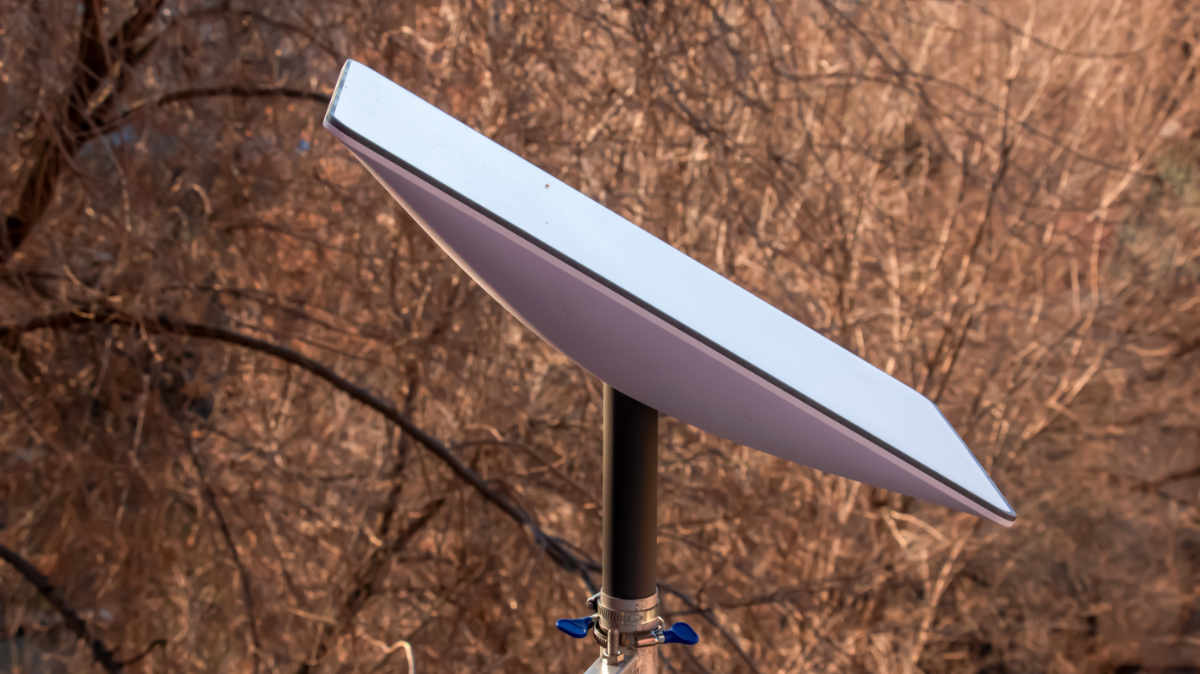Starlink passes muster, linking Norfolk Island to the mainland better than ever before

New low earth orbit satellite tech means the people of Norfolk Island are not going to be left behind in the digital age. Pic via Getty Images.
Sooner or later each new technology eats up the one that went before. As Starlink distributor Netlinkz is discovering, satellite communication is no different.
Sometimes through necessity, and other times purely by design, technology is an ever-changing part of our daily lives.
Take, for example, the change occurring on Norfolk Island. Only 8km long and 5km wide, Norfolk is a speck in the ocean nearly 1700km from Sydney and 1000km from Auckland.
On that island, households, businesses and local government are served by twin High Earth Orbit satellites in equatorial station at an altitude of 36,000km, or not quite three earth diameters.
Each satellite deploys 101 “spot beams”, some narrow and some wide, to provide high speed internet and other communication coverage to a corresponding 101 designated reception zones across the continent and the perimeter of sea-bound territories like Norfolk.
Almost a decade ago this NBN duo replaced an earlier service, and was dubbed “Sky Muster” to convey its important communications role in the bush and regional Australia, with the satellites increasing reception speeds up to four-fold and download speeds 3-6 times faster than before.
They are managed by ten ground stations which modulate the beam overlap and concentration. Given the size of this footprint – extending even to Macquarie Island – this is a remarkable achievement.
However, it does come with the in-built constraints of data processing, and basic physics – the most unyielding of which is that light in all its forms has a finite speed, travelling at a pretty-much constant not-quite 300,000km a second.
This is effectively instantaneous when the round trip distance to low and mid earth orbit satellites, but when the trip is for a geo-stationery satellite large enough to service a land mass, the distance is necessarily far greater.
In Sky Muster’s case this is twice 36,000 or about 5.6 times the earth’s diameter. Inevitably that causes a small delay, which in the days before intense digitisation was of little real consequence.
But it did become a problem when video – the combination of digitised sound, colour and movement – began to require increasingly greedy quantities of bandwidth. Which is why Netlinkz (ASX:NET) was called in to help.
Broken up and stitched together
These billions of bytes of data must be arranged in packets to be sent and then reassembled in the right sequence with none missing and with consistency in the speed of each.
If there is too much variation between packets or if some drop out, then ”jitter” occurs, which can often make the data link degrade to unusable levels – like watching a Netflix program that stops to buffer for 10 seconds after every 5 seconds gets displayed.
As the demands of digital streaming increase bandwidth congestion peak hour increases which may require down-load rationing, or higher charge rates, or both.
While this may be merely irritating for households, it can be damaging for business – and that combination of delay, congestion and generally poor overall quality were holding a number of businesses back.
Riki Christian from Norfolk Island Data Services has recently come on board, partnering with Netlinkz to provide Starlink Business Services in Norfolk Island.
“NBN service has served us well, the problem was latency,” he says.
You’ll have to speak up, sorry.
“On Norfolk even voice services is an issue, but as the demands of business grow with more and services and a shift to the cloud we began to see a serious delay issue,” Riki says.
“We were conditioned to very slow data download speeds, but there is a limit to sitting around waiting for something to down-load.”
He says the 300-350 mbps down-load speed offered by the more powerful business version of Starlink looked like the answer, but he needed verification and preferably quickly.
“When we found Netlinkz could provide a Starlink business transceiver – or several – we were very keen to try it out.”
“Once the kit arrived we were up and running in minutes. Time delay has been cut back from 680-700 milliseconds to just 50-60. In an hour we were operating at 270 mps download and 20 mbps of upload. This was in contrast to the system it replaced at 30 mbps download and only 5 up.
“That’s fast by any standard. It’s the level you would expect from an optic fibre service in Sydney or Melbourne. And since we’re talking about terabytes of data, that quantity would come at a prohibitive cost.”
Riki sees the Starlink a big step up for the island, calling it “ transformative for an economy dependent on tourism”.
Norfolk competes with hundreds of possible tourist destinations and dozens in the western Pacific alone so the requirement is both speed and reliability, regardless of time of day, weather and atmospheric conditions.
“For guests the difference will be remarkable. People come here for the peace and tranquillity, but they don’t want to be cut off either. If they need to connect to check flights or just watch a movie they want a quality service.”
“Norfolk is a small place, so the word has gone around quickly – not just the resorts, but local government and services as well.”
This article was developed in collaboration with Netlinkz, a Stockhead advertiser at the time of publishing.
This article does not constitute financial product advice. You should consider obtaining independent advice before making any financial decisions.
Related Topics
UNLOCK INSIGHTS
Discover the untold stories of emerging ASX stocks.
Daily news and expert analysis, it's free to subscribe.
By proceeding, you confirm you understand that we handle personal information in accordance with our Privacy Policy.








